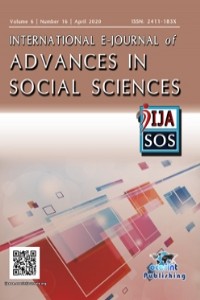THE ROLE OF CITY SOILS IN THE SUSTAINABLE DEVELOPMENT OF MEGAPOLIS: RUSSIAN AND FOREIGN EXPERIENCE OF CREATION AND MAINTENANCE
Abstract
Sustainable development of society is the achievement of a balance between economic and social development, as well as environmental protection. Its main principle is the most rational use of resources with the least negative impact on the environment and even its complete absence. Such a goal is somewhat utopian, but it is an effective deterrent.
The highest role in the development of society is given to cities. According to UN forecasts, as early as 2050, about 2/3 of the world's population will live in urban areas. It should be remembered that with an increase in population, it is necessary to increase the volume of infrastructure, affordable housing, and production, spending additional energy and resources. Besides, cities are centers of industry and manufacturing, points of formation of a considerable amount of waste, emissions, and discharges. The world community is concerned that urban activities are leading to climate change and the disruption of natural processes.
That is why the achievement of sustainable urban development is one of the priority tasks of modern society. In this article, the author analyzes the possibilities of reducing adverse effects by creating greened protective areas that are resistant to the urban environment. The author also offers regulatory suggestions for taking into account soil features when creating new landscaping facilities, establishing regulatory requirements for soil quality indicators that ensure germination, development of green spaces, and maintenance of green areas taking into account optimal environmental and economic indicators.
The goal of this study will be achieved by performing the following tasks:
- The study of international and Russian experience in ensuring the sustainable development of cities concerning the protection of urban soils;
- The application of the results of international studies to the existing regulatory legal requirements in Russia for the creation and maintenance of green areas in megacities;
The methodological base of the research is constituted by such general scientific methods as dialectical and systemic research methods, analysis, synthesis, induction, deduction, analogy, and alike, and such specific scientific methods as historical and legal research, comparative legal research, formal legal, structural-functional and statistical methods. The study is based on the results of studies conducted by Russian and foreign lawyers, ecologists, biologists, as well as economists related to the research topic.
The results of the study can be used for effective environmentally-friendly planning and construction of megacities for countries with similar problems in the field of minimizing the impact of urban activities on climate change and disruption of natural processes.
References
- Decree of the President of the Russian Federation of April 19, 2017 No. 176 "On the Strategy for the Environmental Safety of the Russian Federation for the period until 2025"
Abstract
References
- Decree of the President of the Russian Federation of April 19, 2017 No. 176 "On the Strategy for the Environmental Safety of the Russian Federation for the period until 2025"
Details
| Primary Language | English |
|---|---|
| Journal Section | Articles |
| Authors | |
| Publication Date | September 10, 2020 |
| Submission Date | April 5, 2020 |
| Published in Issue | Year 2020Volume: 6 Issue: 16 |
Contact: ijasosjournal@hotmail.com
The IJASOS Journal's site and its metadata are licensed under CC BY
Published and Sponsored by OCERINT International © 2015- 2025


